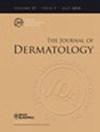Relationships Between Secukinumab Concentrations, Disease Activity, and IL-17A Levels in Psoriasis: A Cross-Sectional Observational Study
Abstract
Secukinumab has been approved for the treatment of psoriasis. Off-label high-dose regimens have been used for certain patients. Therapeutic drug monitoring can assist in adjusting treatment plans. This study aimed to determine the therapeutic threshold of secukinumab and evaluate the influence of patient characteristics on secukinumab concentrations in patients with psoriasis. Patients with psoriasis (n = 36) treated with secukinumab during the maintenance therapy were enrolled in this cross-sectional study. Disease activity was determined using the psoriasis area and severity index (PASI) score, with an optimal response (OR) defined as ≤ 2. Secukinumab trough concentrations were measured using an in-house developed sandwich ELISA method. The median secukinumab concentrations in patients with OR were significantly higher than in those without (35.08 vs. 25.94 μg/mL, p < 0.05). Secukinumab levels greater than 35.43 μg/mL were associated with OR (sensitivity of 50.00%, specificity of 89.89%, AUC = 0.70 and p < 0.05). Multivariate logistic regression showed that secukinumab concentrations were significantly associated with OR (odds ratio: 1.02; 95% CI: 1.01–1.12; p = 0.04). Linear mixed-effects analysis indicated that an increase in body weight and a decrease in albumin were associated with a decrease in secukinumab concentrations. IL-17A levels showed no correlation with PASI score or secukinumab concentrations. Secukinumab concentrations over 35.43 μg/mL were associated with OR in patients with psoriasis. When determining the treatment dose, attention may be paid to patients with higher body weight and lower albumin levels in order to prevent underdosing.


 求助内容:
求助内容: 应助结果提醒方式:
应助结果提醒方式:


